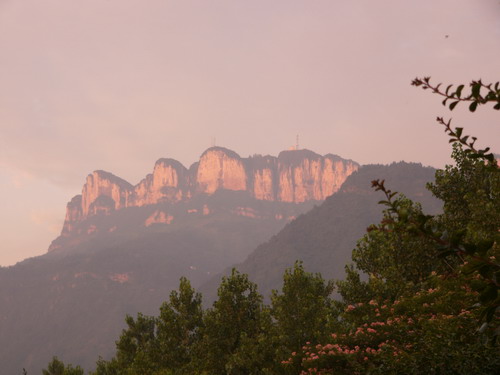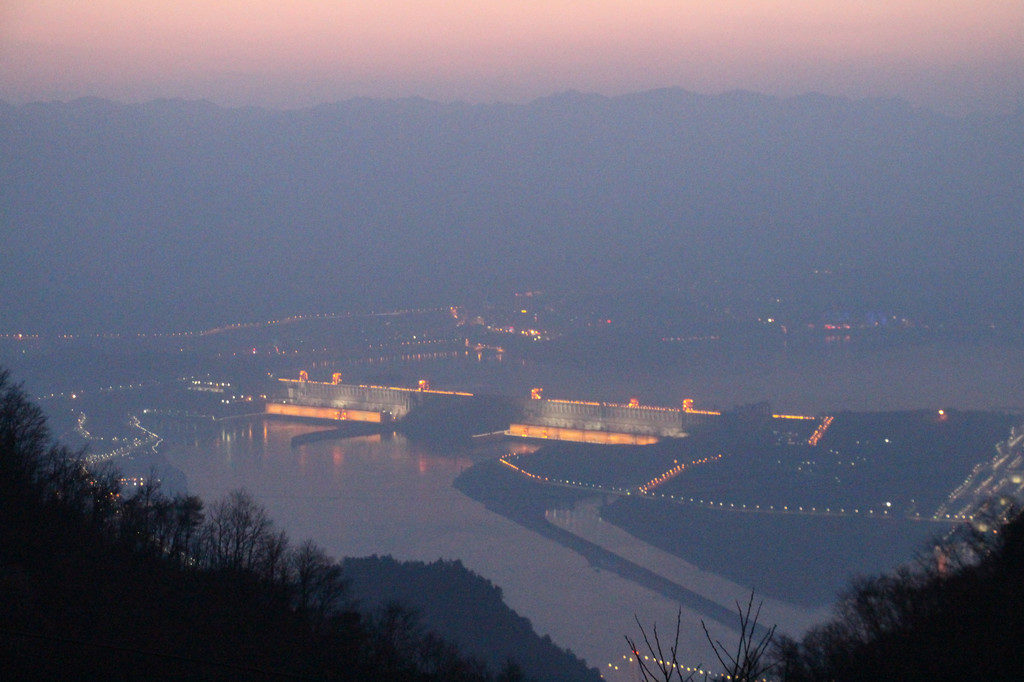At Miaonan broad valley, the Yangtze broadens out and the flanking precipices seem to have receded quite some distance. The rocks jutting out from the riverbed are immersed at flood time so that the flow is forced to change direction. Only the middle section of the river here is navigable.

Yellow Ox Gorge
Some distance down from the Miaonan valley is Yellow Ox Gorge. Here on the south bank stand three grayish white peaks arranged like a screen. One bears streaks looking like a peasant leading a big Yellow Ox. Hence the name of the peak, Yellow Ox Peak, and of this section of the terrain Yellow Ox Gorge. Yellow Ox Peak has been a chief tourist attraction since ancient times. It is mentioned in Waterways Classic by Li Daoyuan (466?-527), a geographer of the Northern Wei Dynasty. Today, this 1,000-meter-high peak has at its foot many plots of terraced fields and a few hamlets. Viewed from this point, the Yangtze appears like the letter “S”.
Situated in the Yellow Ox Gorge is the Yellow Ox Shoal whose another name is Lotus Flower for the Buddha because the hidden rocks here send up the river water in the shape of many lotus flowers. The beating waves are heard quite a distance away. Being high above sea level, the Yellow Ox Peak remains in sight most of the stretch of the journey through this portion of Xiling Gorge. To quote an ancient folk saying, “We set off from Yellow Ox Peak in the morning, and dock by it in the evening. For three days and nights, the peak looms in view.”

Enjoy the Sunset on the Yellow Ox Peak

Three Gorges Dam from Yellow Ox Peak
In the old China, many merchants and boatmen traveling through the Yellow Ox Gorge went ashore to offer sacrifices to Buddha for a safe trip. With the dangerous rocks blasted and the channel dredged after 1949 when the Chinese Communist Party took power from the nationalist Kuomingdang (now in Taiwan), people no longer have to worry about the threatening gorge.


Contact Us Form